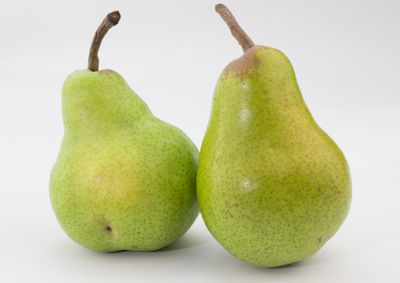What is a Tosca Pear?
As mentioned, Tosca pears are similar to Bartlett pears. Tosca pear trees are a hybrid between the early season Coscia and the Williams bon Cretien, aka the Bartlett pear. These pears were developed in Tuscany, Italy and, due to their Italian heritage, are thought to have been named after the infamous opera by Giacomo Puccini. The earliest pears to ripen (available in the late summer and early fall), Tosca pears are bell shaped with a greenish yellow skin and bright white, juicy flesh.
Growing Tosca Pears
Pear trees need full sunlight, six to eight hours per day, so be sure to select a site that has enough sun exposure. Once you have chosen a site, dig a hole to accommodate the root ball. Amend the soil with plenty of compost. Remove the tree from the burlap and set it in into the hole. Gently spread the roots out and then refill the hole with the amended soil. Water the tree in well and continue to water regularly once or twice a week. Tosca pears will begin bearing fruit in three to five years from planting.
Care for Tosca Pear
Almost all fruit trees need to be pruned at some point and pears are no exception. Prune the tree as soon as it is planted. Leave the central leader alone and select three to five outward reaching branches to prune out. Leave branches that are growing upward alone except to trim off the ends a bit to encourage growth. Thereafter, monitor the tree for any dead, diseased, or crossing branches and prune them out. You should stake the pear to allow it to grow straight and to give it some support from winds. Also, mulch in a 3 foot (just under a meter) circle around the tree to help retain moisture and retard weeds. Generally speaking, pears shouldn’t need more than an annual fertilizing, that is, of course, unless your soil is lacking in nutrients. Be cautious when fertilizing. If you give the tree too much nitrogen, you will end up with a lovely, bushy green tree but no fruit. A great option for the home gardener is a slow-release fruit tree fertilizer, which slowly provides nutrients that should be sufficient for a year.
Harvesting Tosca Pears
Tosca pear trees will bear fruit in three to five years from planting. Since they don’t change color to say red or yellow, but are fairly yellow-green when ripe, color is not an indicator of when they should be harvested. Instead, rely on smell and touch. Ripe pears should give a little when gently squeezed and should smell aromatic.
